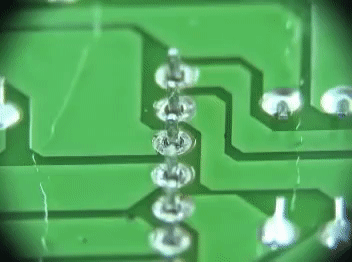Recommended Tips for Drag Soldering
Multiple tip shapes are capable of performing drag soldering.
NOTE: Applying flux to the leads and land pads before soldering helps to prevent problems such as solder bridges.
In addition, the shape BCM/CM which has a hollow in its surface helps prevent bridging. The increased surface tension from the hollow of Shape BCM/CM means that solder is not left in unnecessary areas, reducing solder bridges.
Shape BCM/CM (more info)
 |
Feed solder on a hollow section and drag the tip along slowly. |
Shape BC/C (more info)
 |
Put the cut surface to the leads and drag the tip slowly while feeding solder. |
Shape B (more info)
 |
Put the tip end to the leads and drag the tip slowly while feeding solder. |
Shape D (more info)
 |
Put the tip end to the leads and drag the tip slowly downwards while feeding solder. Take note of when to feed solder to prevent excess solder. |
Shape H (more info)
 |
Put the pad section to the leads and drag the tip along slowly. |
Shape J (more info)
 |
Lay down the long end of the tip and drag the tip slowly. Note the timing to feed solder to prevent excess solder. |
Shape K (more info)
Place the point of the soldering tip to the leads while laying down the entire blade. Feed the solder and drag the tip downwards slowly.
 |
Pin Though Hole (PTH)
|
 |
Quad Flat Pack (QFP)
|

